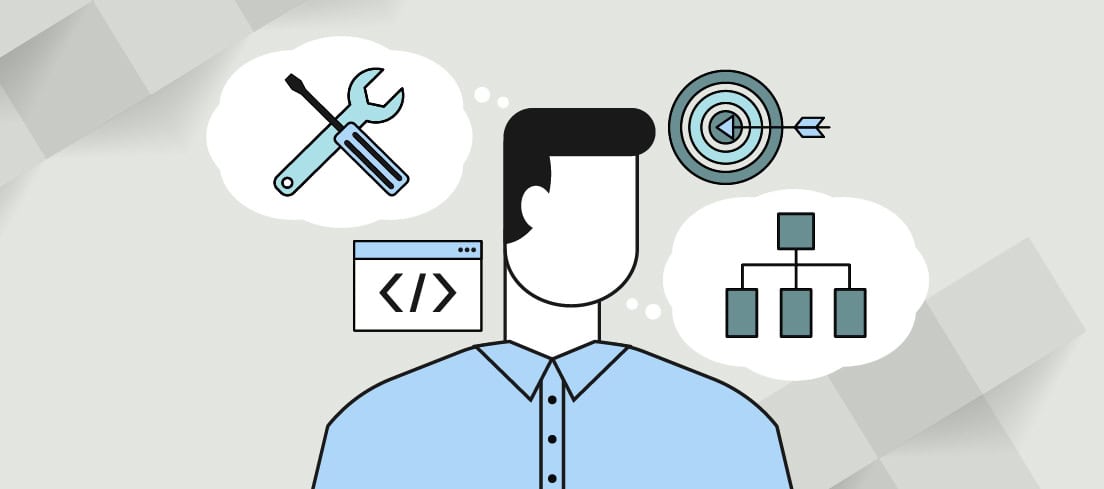3-minute read
In this article, we explore what makes an enduring product leader and how enduring leaders can positively influence their teams and collaborators.
We’ve all worked with product leaders who excel in their roles. And we’ve all worked with leaders who just get by. But even dynamic leaders who are really good at what they do could improve. Organizations need leaders who are more than merely effective. They need enduring leaders who can help propel their organizations forward to remain relevant in the marketplace.
Ready to learn what makes an enduring product leader? Read on or use the links below to jump to the section that most interests you.
What is the Difference Between an Effective and Enduring Product Leader?
The distinction between an effective leader and an enduring one is important. At a minimum, a leader should have a vision: Where are we going today?
An effective leader can build on that by putting words to that vision and leading teams, partners, and stakeholders in pursuit of the vision. An enduring leader can look even farther into the future, grasping the inevitability of change.
What is an Enduring Product Leader?
Enduring leaders can evolve their visions and bring along their teams and stakeholders amid a perpetually evolving market. Team members aren’t one-time project builders; they are resources whose skills and effectiveness improve with each iteration as they learn on the job. Through sustained engagement with their leaders and partners, enduring leaders can discover long-term organizational synergies, effectively influencing the organization.
Most critically, however, enduring product leaders are truly focused on their consumers and their ever-changing circumstances and needs. They take responsibility for their products beyond simple product planning or feature prioritization. It’s not enough for them to walk a mile in the customer’s boots—they must wear them permanently.
With this focus on the long term and the ability to evolve their vision, product leaders bring a sustainable competitive advantage to their products and organizations.
Spheres of Influence
Enduring leaders pursue sustainability, continually working within their three spheres of influence toward their goals:
- Marketplace Sphere of Influence: Refine and evolve their vision by constantly studying the marketplace’s needs and then market-testing possible solutions.
- Leadership Sphere of Influence: Engage their peers and organizational leadership to discover synergies and competencies. Leaders can plan for and build tomorrow’s competencies by understanding what their organizations do well.
- Team Sphere of Influence: Create a cycle of refinement. By putting processes in place at a program level, helping teams improve their skills, and working to remove obstacles, leaders can help their teams better deliver on subsequent iterations with always-improving results.
Enduring leaders must influence—and be influenced by—all three spheres.
Influencing Customers
When product leaders commit to a long-term partnership with their customers, they can constantly monitor what’s changing. How is the customer experience evolving? Is there a shift in their fundamental expectations? Customer desires can change rapidly, and your product may be a laggard when it launches. You should not consider your customer’s experience with direct competitors. Over the longer term, some customer experiences must be viewed at a macro-level as fundamental use cases alter. How do these experiences affect your customer’s expectations?
Therefore, listening to customers requires a never-ending cycle of discovery and prototyping. Ultimately, enduring product leaders can help their organizations become market-driven.
Influencing Leaders
Almost every successful corporation employs a horizontal and vertical growth strategy, which means that exploiting synergies is now fundamental to your product’s success. Today, every product can contribute to an organization’s overall success. Apple’s integrated ecosystem of devices and software is perhaps the most famous example. Still, this strategy can also be seen across disparate industries such as consumer goods and automotive manufacturing, where interchangeable parts were famously key to reducing burgeoning costs and improving production speed.
Enduring leaders engage with the organizational leadership sphere across multiple iterations, keeping them abreast of the long-term product vision and always looking for synergies and opportunities in other departments. The goal is to impact the product and its customers and contribute to the organization’s future by replenishing the pool of internal competitive advantages.
Influencing Your Team
“Coming together is a beginning. Keeping together is progress. Working together is success,” Henry Ford once said.
Keeping teams together requires a dedicated effort to understand everyone’s capabilities, limits, drivers, and impediments. It may not be easy, but this effort pays exceptional dividends as the team’s theoretical knowledge converts into practical know-how. Their governing structure and processes are slowly molded to better enable the team’s work. Operational processes go from constraining their capabilities to supporting the team’s needs.
At the heart of the enduring leadership theory is a requirement to build long-term teams instead of short-term projectized teams. Building long-term teams starts with careful retrospection at the end of every iteration. It requires soft skills to elicit systemic problems and an open mind to listen to critical feedback. Addressing this feedback not only ensures a better environment by removing impediments to product success but also helps leaders keep people on the team longer.
Benefits of Enduring Leadership
The long-term focus of enduring leaders enables companies to build and retain a loyal user base of evangelists who know you are aware of their needs before they are. It enables organizations to operate cohesively instead of as a house of brands built on siloed product lines. Most critically, it enables perpetually improving teams that take each iteration of a product as an opportunity to sharpen their skill sets, toolkits, and processes. Put another way: Enduring leaders enable enduring product lines—creating enduring organizations.
Authors
-

Gaganjyot Kainth, a Senior Program Manager with 18 years of experience, has demonstrated expertise at Sapient, SapientNitro, and Adobe. Specializing in leading large-scale, end-to-end delivery of critical initiatives, Gaganjyot excels in Portfolio Management, Product Delivery Management, and Business Change Management for Fortune 500 clients. His proven track record attests to his leadership in navigating complex business landscapes. For questions or inquiries, please contact [email protected].
View all posts -

Abhinav Arora, a seasoned Product Management expert with 18 years of experience, has enriched organizations like eBay and Lowe's. Proficient in IoT, SaaS, AIML, and product roadmaps, he brings invaluable insights. For questions or inquiries, please contact [email protected].
View all posts







